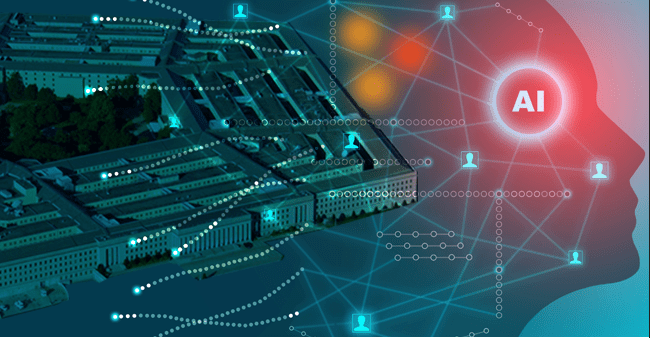TL;DR:
- Government oversight officials will review the Defense Department’s new Data, Analytics, and AI Adoption Strategy in early 2024.
- A prior watchdog study urged the DOD to enhance AI frameworks and inventory processes.
- GAO Director Alissa Czyz emphasizes that all seven recommendations from the 2022 report are under scrutiny.
- GAO will analyze the 2023 AI strategy and discuss it with DOD officials.
- Challenges in identifying and forecasting the military’s AI workforce persist.
- The Pentagon’s failure to implement recommendations may lead to fragmentation in AI adoption.
- The Pentagon released its updated AI Adoption Strategy, which may impact GAO’s 2022 recommendations.
Main AI News:
In preparation for the upcoming year of 2024, the vigilant guardians of government oversight are gearing up to engage with multiple teams within the esteemed Defense Department. Their mission is to conduct a meticulous examination of the agency’s recently unveiled Data, Analytics, and Artificial Intelligence Adoption Strategy. This comprehensive assessment is intended to determine whether the strategy aligns with the invaluable guidance dispensed in a March 2022 report.
A year ago, a seminal watchdog study called upon the Department of Defense (DOD) to fortify its foundational frameworks, streamline inventory procedures, and formalize its approaches to harnessing the formidable, yet still-evolving, realm of artificial intelligence. Alissa Czyz, Director for Defense Capabilities and Management at the Government Accountability Office (GAO), emphasized, “All seven recommendations made by GAO in that report are currently under scrutiny.“
However, the plot thickens. In the imminent future, the GAO will embark on a rigorous analysis of the Pentagon’s novel 2023 data and AI strategy, entering into dialogue with DOD officials from the Chief Digital and AI Office, among other key departments. This undertaking falls under the auspices of their diligent commitment to follow up on recommendations. Czyz, a venerable figure who has been part of the watchdog agency since 2004, leads the charge in overseeing GAO’s initiatives related to strategic warfare, intelligence, and government-wide personnel vetting.
Recently, Czyz and her astute team conducted an extensive study that uncovered formidable challenges currently confronting the Pentagon and its burgeoning Chief Data and AI Officer (CDAO) in the realm of identifying and projecting the military’s AI workforce. In their report, they underscored a stark reality – as of November 2023, “DOD had not fully implemented” any of the recommendations previously proffered in their initial review of the Pentagon’s AI endeavors.
The GAO officials have articulated the far-reaching implications stemming from the Pentagon’s failure to adopt the seven recommendations outlined in the 2022 review’s “Conclusion” section. Czyz elaborated, “For instance, we highlight the critical lack of comprehensive data available to Congress and DOD decision-makers regarding the scope and extent of DOD’s AI portfolio. Furthermore, we emphasize that by issuing definitive guidance and agreements to delineate the roles and responsibilities of various military services and DOD entities engaged in AI activities, the Department of Defense can preempt unnecessary fragmentation, redundancy, and overlap as AI technologies are embraced and integrated.”
Notably, the Pentagon unveiled its updated “Data, Analytics, and Artificial Intelligence Adoption Strategy” just last month. This strategy had its origins in 2018, with a revision in 2021. Czyz emphasized the significance of the impending evaluation of DOD’s latest revamped AI adoption strategy, scheduled for the early months of the new year. This assessment holds the potential to influence the status of GAO’s outstanding 2022 recommendations, adding an intriguing layer to the unfolding narrative of AI’s role within the defense landscape.
Conclusion:
The vigilant oversight of the Government Accountability Office (GAO) in assessing the Pentagon’s AI strategy signifies a commitment to bolstering the Department of Defense’s utilization of artificial intelligence. As the Pentagon refines its AI adoption strategy, businesses in the AI sector should stay attuned to potential market shifts and opportunities stemming from improved AI integration within the defense landscape.

